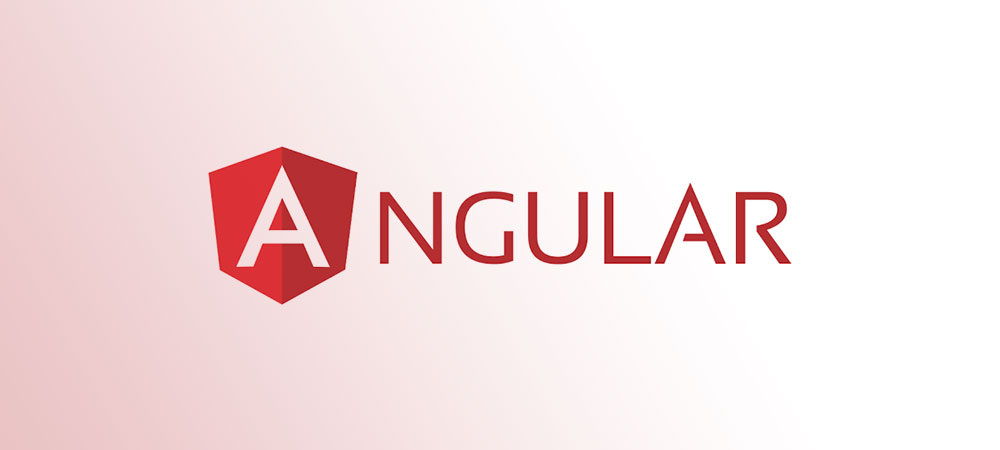Imagine crafting a sleek, modern web app, as smooth and quick as a sports car on the freeway. Now, what if I said there’s more than one route to that polished performance? Enter the bustling bazaar of Express.js alternatives—the unsung heroes in the realm of Node.js frameworks.
We’re diving deep into the vibrant ecosystem of backend powerhouses, where tools dance to the rhythm of server-side development, each with its own beat.
As a web designer, my toolkit overflows with these instruments, each promising scalability, speed, and a custom tune for our digital symphony.
By the time the curtain falls on this exploration, you’ll have a treasure map, guiding you through the jungles of middleware and the deserts of REST API tools, to discover the gem that fits your web app like a glove.
Hang tight. We’re about to reveal a lineup that showcases the speedster Fastify, the versatile Hapi.js, and the full-stack warrior Sails.js, amongst others. Expect to unravel the myth, catch the wave, and possibly, find the compass pointing to your next big adventure in web application development.
Express.js alternatives
| Express.js Alternative | Language | Programming Paradigm | Performance | Ease of Learning | Ecosystem Support |
|---|---|---|---|---|---|
| Kotlin (Ktor) | Kotlin | Object-oriented, Functional | High | Moderate | Good (JetBrains support) |
| Rust (Actix-web) | Rust | Procedural, Concurrent | Very High | Steeper | Growing |
| TypeScript (NestJS) | TypeScript | Object-oriented, Functional | Moderate | Easy (for JS devs) | Good (npm ecosystem) |
| Elixir (Phoenix) | Elixir | Functional, Concurrent | High | Moderate | Good |
| Dart (Aqueduct) | Dart | Object-oriented | Moderate | Easy | Moderate |
| Scala (Play Framework) | Scala | Object-oriented, Functional | High | Steeper | Good (JVM ecosystem) |
| Swift (Vapor) | Swift | Object-oriented, Functional | High | Moderate | Good (Apple ecosystem) |
| Go (Gin) | Go | Procedural, Concurrent | Very High | Easy | Good |
| Ruby on Rails | Ruby | Object-oriented, MVC | Moderate | Easy | Excellent |
| Julia (Genie.jl) | Julia | Functional, Procedural | High | Moderate | Moderate |
| F# (Giraffe) | F# | Functional | High | Moderate | Good (.NET ecosystem) |
| Haskell (Yesod) | Haskell | Functional | High | Steeper | Moderate |
| Clojure (Compojure) | Clojure | Functional | Moderate | Steeper | Good (JVM ecosystem) |
| Lua (Lapis) | Lua | Procedural, Scripting | Moderate | Easy | Moderate |
| Elm (Elm Reactor) | Elm | Functional | Moderate | Moderate | Small |
| Crystal (Kemal) | Crystal | Object-oriented, Concurrent | High | Moderate | Small |
| Nim (Jester) | Nim | Procedural, Object-oriented | High | Easy | Moderate |
| Racket (Racket HTTP) | Racket | Functional, Procedural | Moderate | Steeper | Small |
| ReasonML (ReasonReact) | ReasonML | Functional | Moderate | Moderate | Moderate (npm ecosystem) |
| Groovy (Grails) | Groovy | Object-oriented, Dynamic | Moderate | Easy (for Java devs) | Good (JVM ecosystem) |
| Purescript (Pux) | PureScript | Functional | Moderate | Steeper | Small |
Kotlin
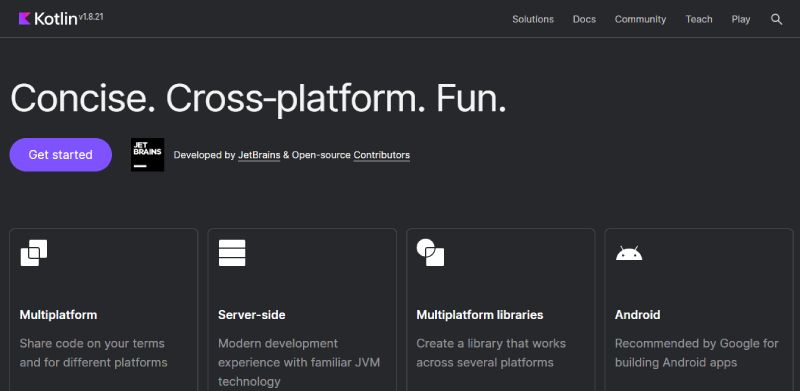
Kotlin’s the cool kid on the block that plays well with Java. Think of it as Java without the wrinkles – sleek, modern, and inherently practical. Kotlin’s approach to solving server-side dilemmas is like having a Swiss Army knife in your developer toolkit – versatile and ready for anything.
Best Features
- Null safety
- Concise syntax
- Java interoperability
- Coroutines for asynchronous programming
What we like about it:
Kotlin’s coroutines are a game-changer; they make writing asynchronous code almost as straightforward as penning a grocery list.
Rust
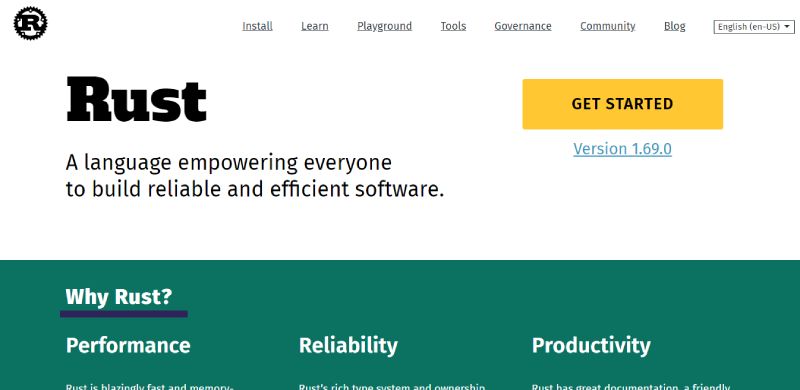
Rust brings the brawn to the table when we talk about memory safety without a garbage collector. For web services where performance couples tightly with safety, Rust flexes its muscles and shows off its control over system resources.
Best Features
- Memory safety guarantees
- Fearless concurrency
- Minimal runtime
What we like about it:
Its take on concurrency — no more nightmares about race conditions. Rust keeps threads in perfect harmony.
TypeScript
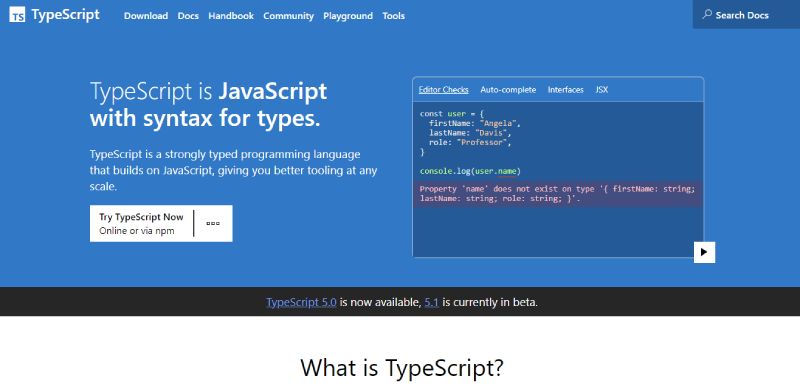
TypeScript, or should I say JavaScript’s more orderly sibling, steps up to clarify chaos. It’s all about adding explicit types to JS; think of it as the organizer who labels all the boxes after a move.
Best Features
- Static type-checking
- Advanced type inference
- Compatibility with JavaScript
What we like about it:
The static type-checking is the MVP here, keeping type-related bugs at bay.
Elixir
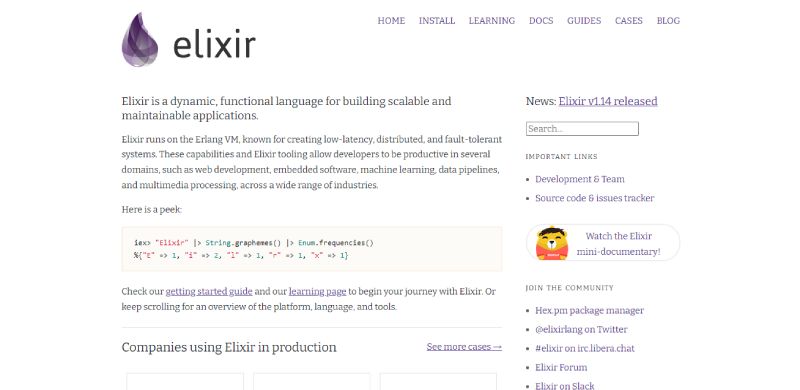
With Elixir, it’s concurrency for the win, served on a high-performance platter thanks to the Erlang VM. It’s like having a grand ball where each guest – or process – dances to its own tune, no toes stepped on.
Best Features
- Scalable and maintainable code
- Powerful pattern matching
- Built-in support for metaprogramming
What we like about it:
Its ability to handle umpteen simultaneous processes makes it a concurrency king.
Dart

Dart zooms in with a promise of smooth UI creations, especially when paired with Flutter for those nifty mobile or web interfaces. It’s like building with clay that morphs easily into whatever your imaginative mind conjures.
Best Features
- Familiar syntax for C-style language users
- Sound null safety
- Strongly typed object model
What we like about it:
Dart’s seamless blend with Flutter stands out, transforming UI building into a breeze.
Scala
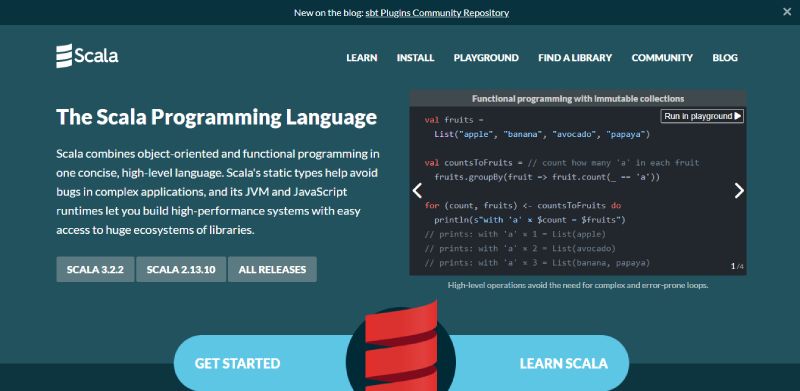
If there ever were a melting pot for functional and object-oriented programming, Scala would be it. It’s the linguist of languages – rich, expressive, and eloquent in delivering robust backend services.
Best Features
- JVM compatibility
- Immutability and concurrency control
- Pattern matching and higher-order functions
What we like about it:
Its hybrid nature – the best of OOP and functional programming in one language, is a real crowd-pleaser.
Swift
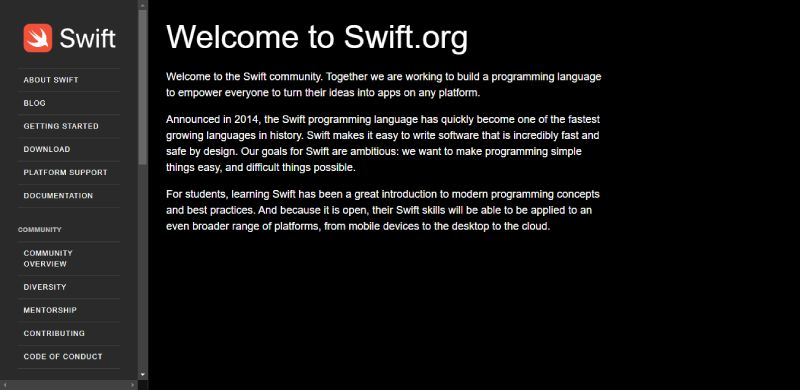
Swift whisks you away into a world of intuitive iOS development. It has the finesse of a ballet dancer, making safe, fast executable programs with a grace that seems almost effortless.
Best Features
- Swift and efficient performance
- Reduced memory footprint with ARC
- Playground feature for direct code testing
What we like about it:
Swift’s performance is sterling, making iOS app development a swift affair.
Go

Go, or Golang, is minimalism in its prime form. Built for the cloud, Go simplifies goroutine-based concurrency and has often been called a cloud-native hipster for its elegance and simplicity.
Best Features
- Simplicity and readability
- Built-in concurrency mechanisms
- Static typing and efficiency
What we like about it:
Goroutines. They make handling concurrent threads as effervescent as bubbles in soda.
Ruby
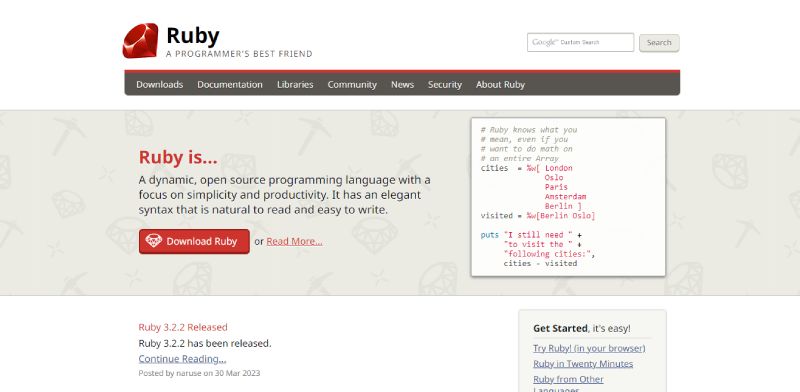
Ruby’s mantra is happiness and productivity, offering a clean, readable syntax that mirrors English. It’s like your best buddy who helps you write code with a smile, ensuring a delightful coding experience.
Best Features
- Dynamic typing system
- Robust standard library
- Metaprogramming capabilities
What we like about it:
The Ruby community’s spotlight shines brightly on Rails – a framework that’s synonymous with rapid web development.
Julia
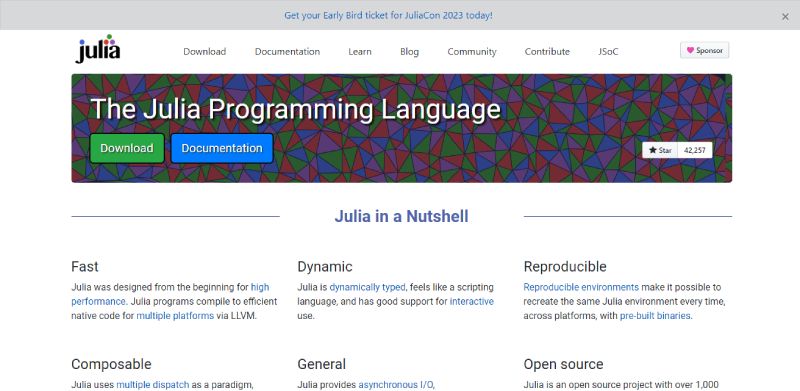
Julia soars with mathematical prowess, perfectly blending the realms of data, science, and high-performance computing into one dynamic language.
Best Features
- Designed for high performance
- Multiple dispatch paradigm
- Great for numerical and technical computing
What we like about it:
Julia’s instruments are sharpened for high-performance computing, making it a mathematician’s dream.
F#
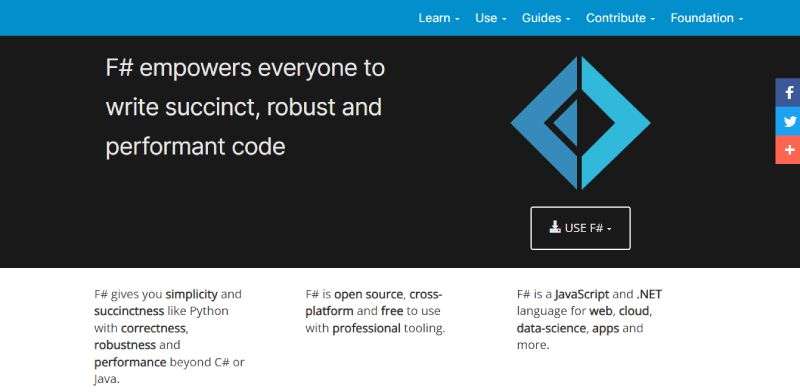
F# slices through complexity with the power of functional-first programming. It’s the treasure map for developers seeking solutions in a syntax that’s robust yet succinct.
Best Features
- Immutable by default
- First-class functions
- Scalability and simplicity
What we like about it:
What stands out is its strong inclination towards functional programming, marrying simplicity with performance.
Haskell
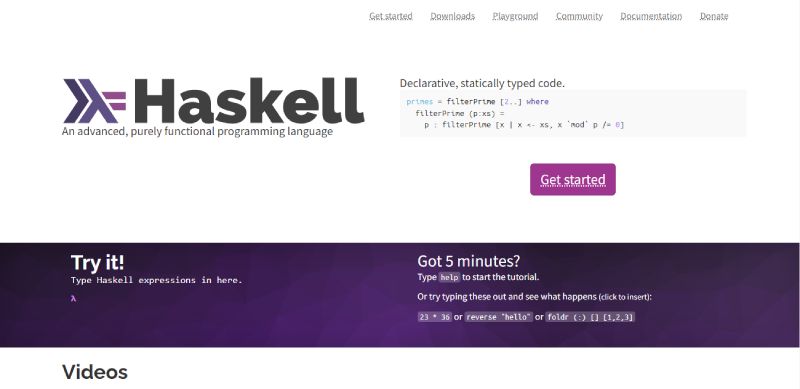
Haskell invites you to sip the functional programming elixir, preaching immutability and type safety. It’s almost philosophical in its approach, offering purity and laziness as core tenets.
Best Features
- Pure functional programming
- Strong static typing with type inference
- Lazy evaluation
What we like about it:
Pure functional code. In Haskell’s world, code is poetry freed from the chains of side effects.
Clojure
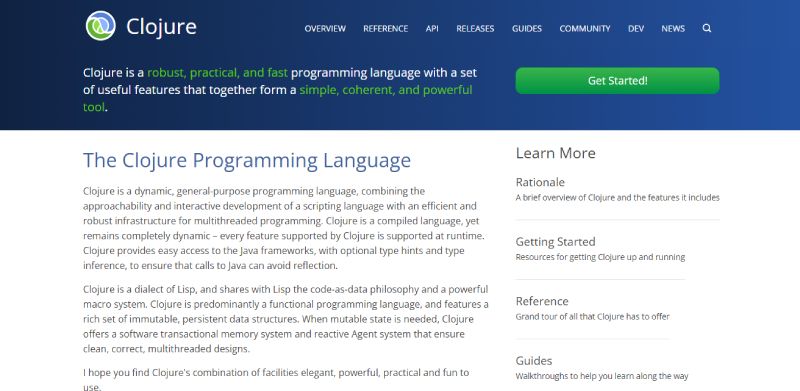
Clojure is a breath of fresh, functional air, a Lisp dialect that embraces immutability and treats code as data. Think of it as a wizard’s spell for unleashing powerful, transformative programs.
Best Features
- Code-as-data philosophy (homoiconicity)
- Immutable data structures
- Concurrency support
What we like about it:
Its functional flair and elegant concurrency model keep Clojure in the mages’ circle.
Lua
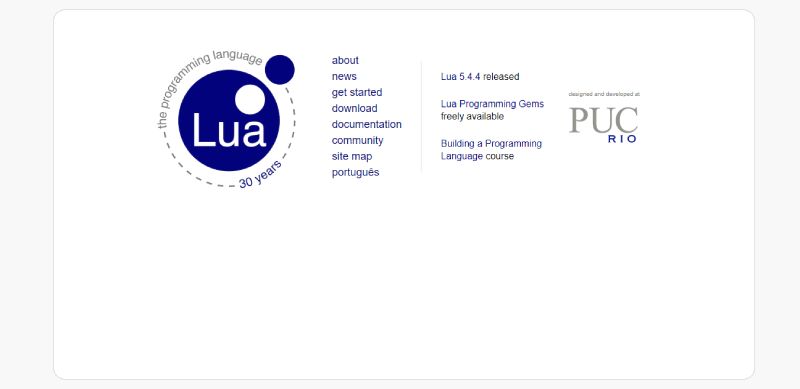
Lua’s the nimble sidekick for embedded systems, gaining clout for its lightweight footprint. It’s the agile acrobat, performing behind the scenes in games and applications needing a speedy scripting language.
Best Features
- Lightweight and embeddable
- Fast execution speed
- Easy-to-learn syntax
What we like about it:
Its speed and flexibility turn heads; Lua slips into applications, making it the stealthy scripter’s friend.
Elm
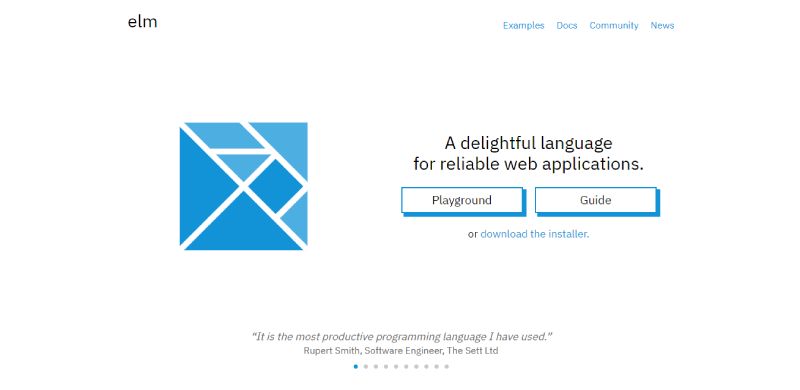
Elm packs a punch for front-end developers with its no-runtime-errors promise. This static typing champion weaves web interfaces without the usual bug-hunting escapades.
Best Features
- Friendly error messages
- Strong emphasis on simplicity and quality tooling
- Architectural pattern to structure web apps
What we like about it:
The zero-runtime-errors claim is a show-stealer; Elm dares you to break it – oh wait, you can’t!
Crystal
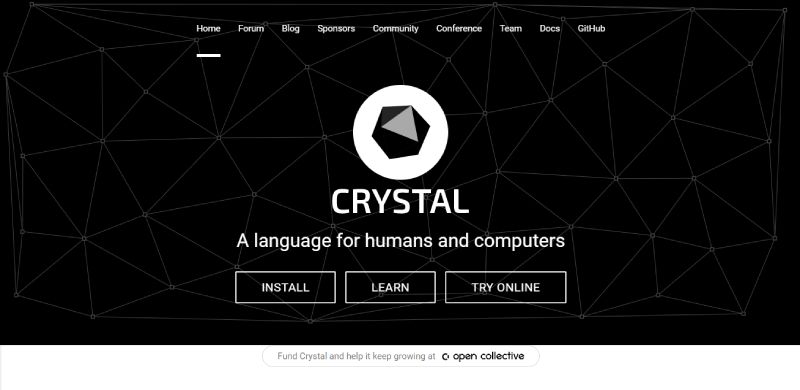
Crystal reflects the beauty of Ruby’s syntax and tacks on the speed you’re after. It’s like taking an aesthetic picture, then finding out it’s also a high-speed bullet train to efficiency town.
Best Features
- Ruby-like syntax for ease of use
- Type inference for fewer type annotations
- Compile-time checks with fast execution
What we like about it:
Crystal’s shimmer lies in its harmonious blend of beauty and brawn, delivering Ruby’s charm at C-like speeds.
Nim
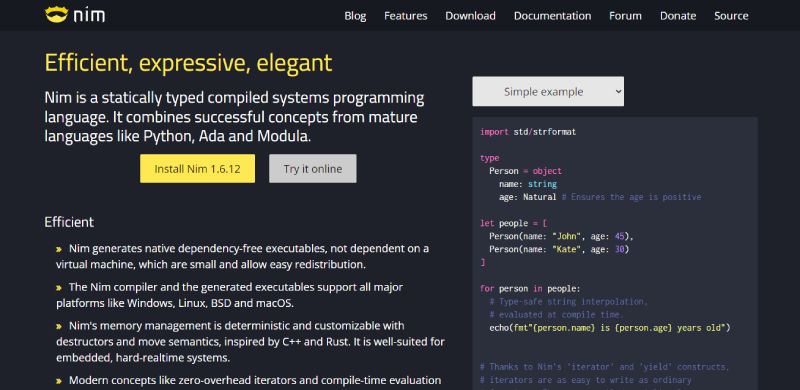
With Nim, you get a compiler that’s all about efficiency and speed, while offering a syntax that doesn’t scare away the newcomers. It’s as versatile as a Swiss Army knife, promising to be a trusty sidekick in a wide array of applications.
Best Features
- Python-like syntax
- Compile-to-C, C++, or JavaScript
- Memory efficiency with garbage collection
What we like about it:
Nim’s subtle strength lies in its versatility — the ability to adapt across different domains with a nimble touch.
Racket
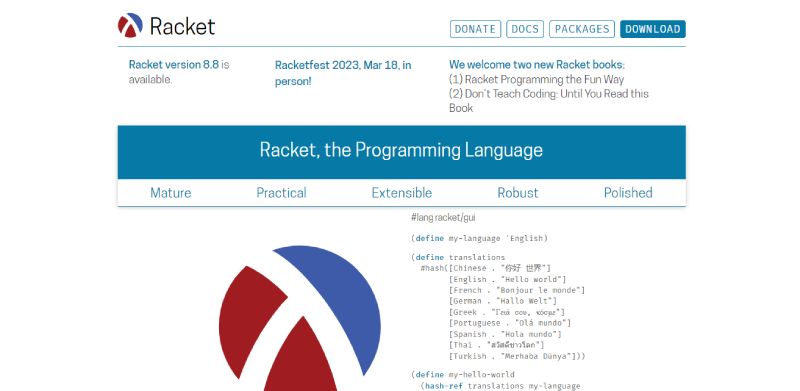
Racket takes the scholarly high ground, drilling deep into the realms of language creation and design. This Lisp-tinted language, once known as PLT Scheme, is like a philosopher among programmers — always striving for more profound knowledge.
Best Features
- Language-oriented programming design
- Rich collection of libraries
- Pedagogic platform for language learning
What we like about it:
It’s the toolbox for creating new programming languages that really sets Racket on its pedestal.
ReasonML
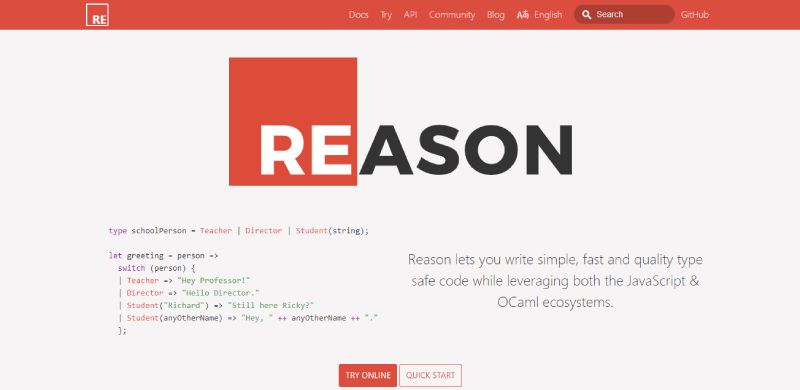
ReasonML brings OCaml’s powerful features to Javascript developers with accessible syntax. It’s like having a secret weapon that can tackle complex apps with elegance and strength.
Best Features
- Functional programming with an object-oriented twist
- Strong type system
- Interoperability with JavaScript through BuckleScript
What we like about it:
The blend of OCaml’s might with JavaScript’s ubiquitous nature is where ReasonML shines the brightest.
Groovy
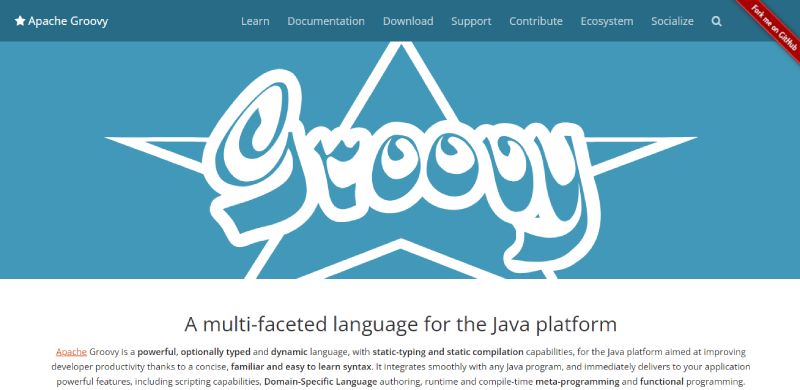
Groovy dances to the beat of dynamic language scripting while being snugly homed on the JVM. It complements Java, making tasks like scripting, testing, and web application development a groovier experience.
Best Features
- Scripting capabilities alongside Java code
- Support for domain-specific language creation
- Easy learning curve for Java developers
What we like about it:
The ease of picking up Groovy for the Java-accustomed crowd is a big win – it’s like Java without the stiffness.
Purescript
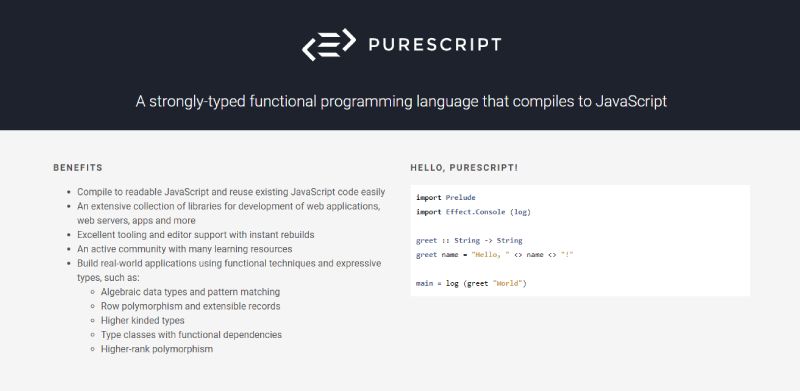
Purescript calls to the heart of Haskell enthusiasts desiring to deploy their love for functional programming in the web world. Its strict adherence to purity ensures you’re creating web assets that are scalable and maintainable.
Best Features
- Strong, static type system
- Pure functional programming
- Interoperability with JavaScript
What we like about it:
Purescript’s strict purity rules mean predictability and fewer side-effect induced headaches, a solace for the meticulous coder.
FAQ on Express.js alternatives
Why Look for Alternatives to Express.js?
When you’ve got a trusty sidekick like Express.js, switching gears might feel offbeat. But here’s the gist—developers sometimes crave different flavors of efficiency, or a framework that resonates with their unique coding vibe. Maybe they need a tighter grip on performance, cleaner syntax, or an all-inclusive suite for rapid development.
How Does Koa.js Differ from Express.js?
Koa.js is like Express.js’s younger, minimalist cousin. It deals with async operations more efficiently. If you’re all about keeping things light and avoiding callbacks like that one relative we all dodge at reunions, Koa.js might just be your cup of tea. It’s built to be barebones but extensible — a canvas waiting for your brush.
Is Hapi.js Better for Building APIs?
Hapi.js doesn’t play favorites, but it’s got serious game when it comes to structuring robust APIs. With its built-in plugin system, your road to API town could be less bumpy. If you’re aiming for a high level of customization without middleware madness, Hapi’s your companion.
Can Sails.js Enhance Full-Stack Development?
Navigators wanted! With Sails.js, you sail the full-stack seas with ORM in your treasure chest and real-time data updates as your North Star. It’s a beacon for projects needing WebSocket support and seeks adventures in heavy data-driven voyages. A full-stack framework that’s got your back both client and server-side.
What’s the Learning Curve Like For Fastify?
Fastify’s a quick study; you learn to speed without the spills. Its performance focus and low overhead philosophy mean it’s fast out-of-the-box and doesn’t need a pit stop of tweaks. The learning curve is pretty friendly, especially if you’ve hung out with other Node.js frameworks before.
How Does Meteor.js Support Real-Time Applications?
Meteor.js is the jet fuel for real-time apps. It brings together all the parts under one roof—front-end, back-end, and database management. With Meteor.js, your updates flow live across clients like hot gossips in a bustling coffee shop. It’s real-time done simply and done well.
What Benefits Does NestJS Offer for Developers?
Consider NestJS a framework with an enterprise-level blueprint. It follows Angular’s footsteps closely, with TypeScript at its core, which is a joy for those in the Angular camp. It gives structure and sanitation for scalable server-side apps, plus it’s got a dense ecosystem. It’s for building blocks that are neat and cohesive.
Why Might AdonisJs Be a Good Choice?
Think of AdonisJs as comfort food for the Laravel-loving soul. It’s a Node.js homestead that could charm a PHP developer with familiar conventions and a stable environment. If you’re into SQL and want an ORM (Lucid) that’s got your relational data sorted, AdonisJs is a seat at the table.
Is Feathers.js Suitable for Microservices Architecture?
Absolutely, Feathers.js flies high when it comes to microservices. It’s a bird of a flexible feather and loves to play matchmaker with services and apps of all sizes. It’s the friend that introduces everyone at the party—talk talk REST, hook up with Socket.io; transparency is king.
Can LoopBack Make API Development Easier?
LoopBack walks you around complexity with its Model-View-Controller (MVC) approach while crafting APIs. It’s got a truckload of tools that kicks the pain out of connecting with databases. It’s like having an API genie—three wishes, and your APIs are ready, robust, and clean.
Ending thoughts
Whew, we’ve surfed the high waves of Express.js alternatives, haven’t we? Diving into this ocean of server-side frameworks, it’s like picking the perfect burger from a decked-out menu. Each has its own zest, its spark.
- If it’s minimalism you’re after, Koa.js beckons with open arms.
- Crave structure? NestJS has that in spades.
- Dream of crafting real-time apps with the grace of a dancer? Meteor.js spins you round to the right beat.
- Then there’s AdonisJs, the homey spot for those who want that cozy, familiar vibe.
Each twist and turn through the land of backend frameworks is a step away from the ‘just-Express.js’ narrative, a step toward finding the fit that feels just right for your project. It’s not about the best or the flashiest; it’s about what syncs with your vision, what amplifies your code’s voice. So buckle up; a new adventure awaits with every framework you meet.
If you liked this article about Express alternatives, you should check out this article about Angular alternatives.
There are also similar articles discussing PHP alternatives, Ruby alternatives, Redux alternatives, and Spring alternatives.
And let’s not forget about articles on Flask alternatives, TypeScript alternatives, Laravel alternatives, and Python alternatives.
- Securing Funds: How to Get Funding for An App - April 23, 2024
- Connect and Explore: The Best Apps Like Meetup - April 22, 2024
- The Impact of Managed IT Services in Florida - April 22, 2024







